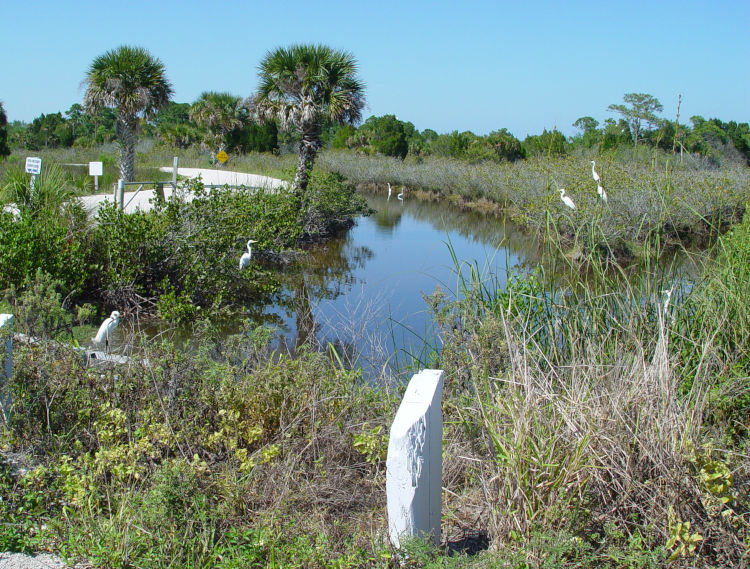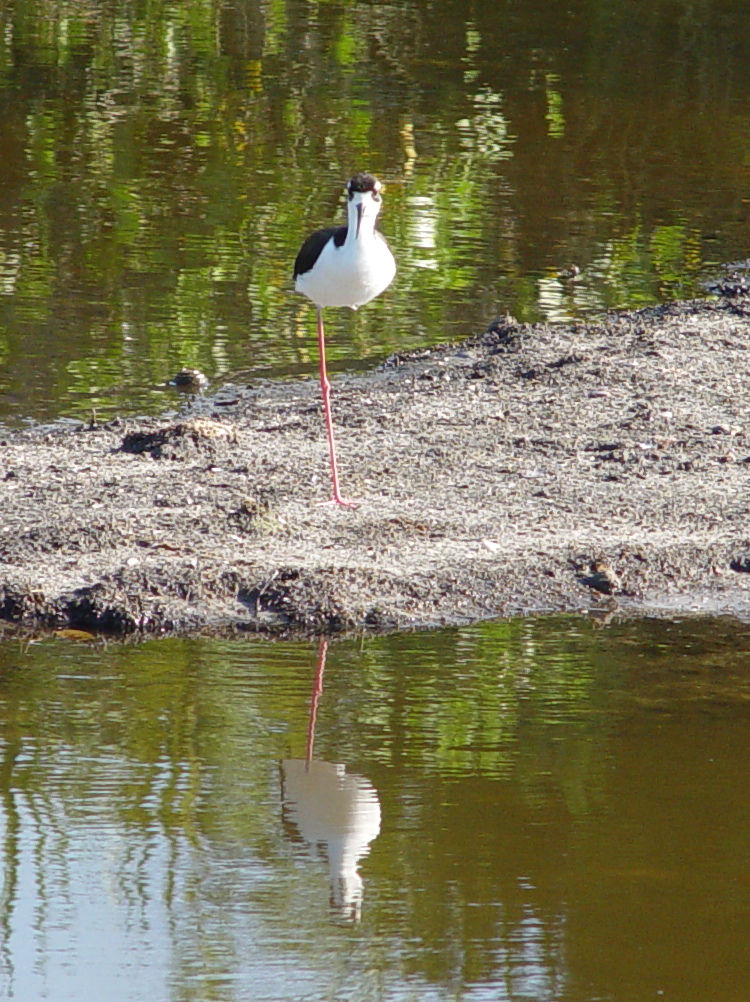
N 28°39’27.03″ W 80°45’16.04″ Google Earth location
This particular one was easy to pin down, since it was taken right at the entrance to Black Point Wildlife Drive within Merritt Island National Wildlife Refuge in (ready for this astounding coincidence?) Merritt Island, Florida. This is more readily known as Cape Canaveral, though technically it isn’t, but only a few kilometers from here sits the end of the NASA Shuttle Landing Facility, and the Vehicle Assembly Building is visible throughout most of the refuge (given how it rises higher than any land in Florida, no lie.) You can click on this image (or here) to see the full-frame, full-resolution version to count the birds, because there are at least 12 birds visible in the frame, and I think it’s actually 14 – I’ll provide a cheat sheet below. I won’t guarantee that you’ll seen this many birds immediately upon entering, but you will see birds, and plenty of them – this is not just Florida, which says enough by itself, but prime habitat for the waders and shellfish foragers.
The drive itself is several kilometers long – longer than a straightline path to the shuttle landing strip – and winds merrily through a variety of marsh and wetland regions. You’re free to get out of your vehicle, and in fact might miss a lot if you don’t, just be aware that the area does have alligators and likely cottonmouths, though I’ve never seen the latter (plenty of the former, though.) It remains the only place that I’ve seen glossy ibis (Plegadis falcinellus,) I believe.

… which is faintly curious given that the white ibis were routine visitors to the apartment complex pond immediately out the back door when I lived in Florida, but so it goes. The refuge is also home to somewhat bizarre-looking species such as the black-necked stilt (Himantopus mexicanus):

Honestly, the neck is black when seen from the back, though admittedly they could have done a better job of naming it. And the species has two legs, including this one – it’s just tucked up inside of the belly feathers, hard as that may be to believe. I couldn’t pin down even a rough location for either of these images, given how few landmarks are within the refuge and how the drive twists around, but they were all taken from the drive surface at least. Lots of shorebirds, night herons, spoonbills, and I’m fairly certain I was only a handful of meters from a wild pig foraging in the undergrowth, judging from the noises, but the foliage was so thick I never saw a thing – did see one further down the main road, though, but it disappeared before I brought the camera to bear. Same with a truly massive bobcat that crossed the road in the early evening. Turn north off of Black Point Wildlife Drive and head up several kilometers to Haulover Canal to stop at the Manatee Observation Deck just past the bridge if you like – I’ve seen manatees there every time that I’ve visited. It’s a great place to see critters, is what I’m saying – you can’t go wrong. Sunscreen and bug spray are highly recommended, though, and a good bird guide cannot hurt.
Cheat Sheet: Most of the birds visible in the image are great egrets (Ardea alba,) though the one closest to the camera, lower left atop the concrete culvert, is instead a snowy egret (Egretta thula.) They’re only about a third of the body size of the great egrets, maybe slightly larger than a crow. Spot the three great egrets together, middle right, and go to the treeline above them for what is likely another pair of snowys. However, in the treeline to the left of that, just right of the palm, is more likely a pair of great egrets again, given the apparent distance and the position at the tops of the trees. Then back down to the channel, immediately left of the pair of great egrets there, may sit a great blue heron (Ardea herodias herodias,) camouflaged by color among the reeds. Meanwhile, in the dead tree towards top right appears to be another bird, though I won’t hazard a guess as to what species. And presumably you did not miss the egret deep in the reeds at lower right. Now you know why I had to upload the full-sized version.




















































